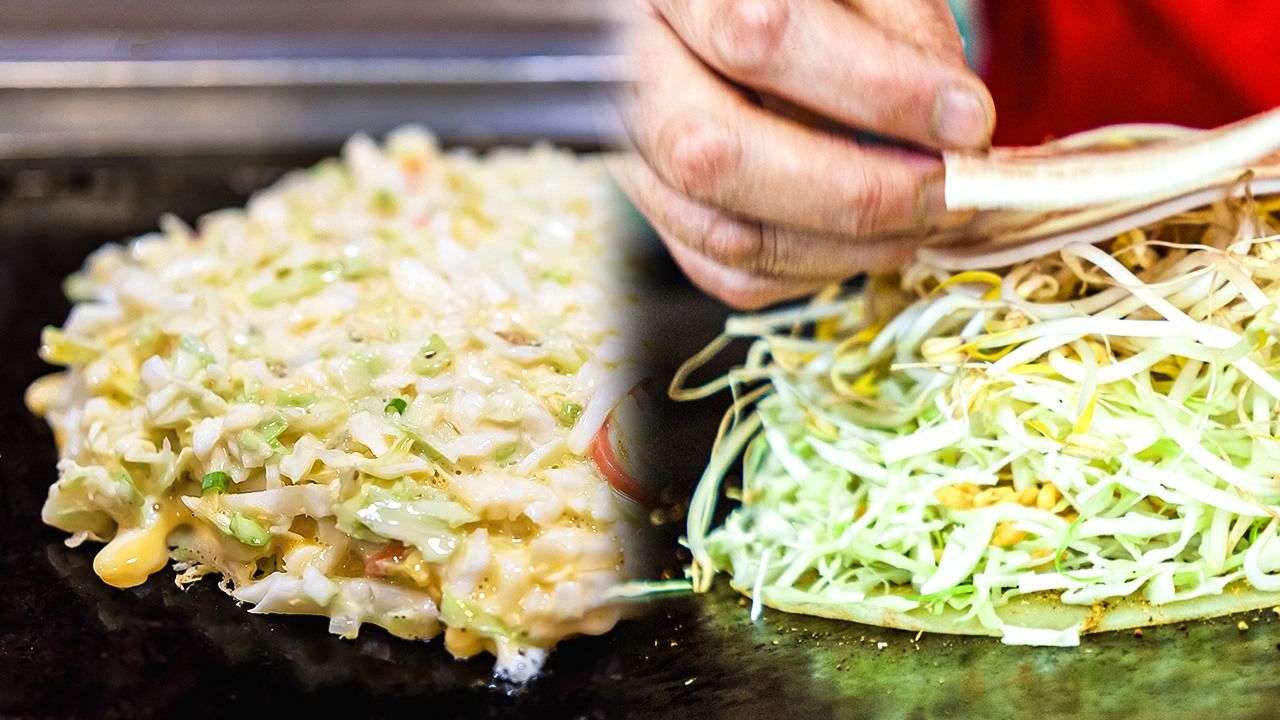
“Okonomiyaki”: Kansai and Hiroshima Styles
Food and Drink Travel Culture- English
- 日本語
- 简体字
- 繁體字
- Français
- Español
- العربية
- Русский
Kansai-Style Okonomiyaki
Konamon flour-based cuisine, including okonomiyaki, is said to be the soul food of Kansai, and its roots can be traced back to the sixteenth century. Tea master Sen no Rikyū makes a number of mentions of a sweet known as funoyaki in his records of ceremonies. This was made by mixing flour with water and baking it into a thin pancake. It was then coated with miso, sprinkled with sugar and poppy seeds, and rolled up.
Changes over time to the ingredients and cooking method for funoyaki are thought to have led to the creation of okonomiyaki. Today’s style was developed in the twentieth century. What makes the Kansai-style pancakes distinct is the use of konbu dashi soup stock. All the ingredients are mixed into a batter of flour and konbu dashi, after which it is cooked. It is common to add eggs or grated yam to the batter to give it a fluffy texture.
As it is quick to cook, at many restaurants diners make the okonomiyaki themselves on a teppanyaki plate right there at their table.
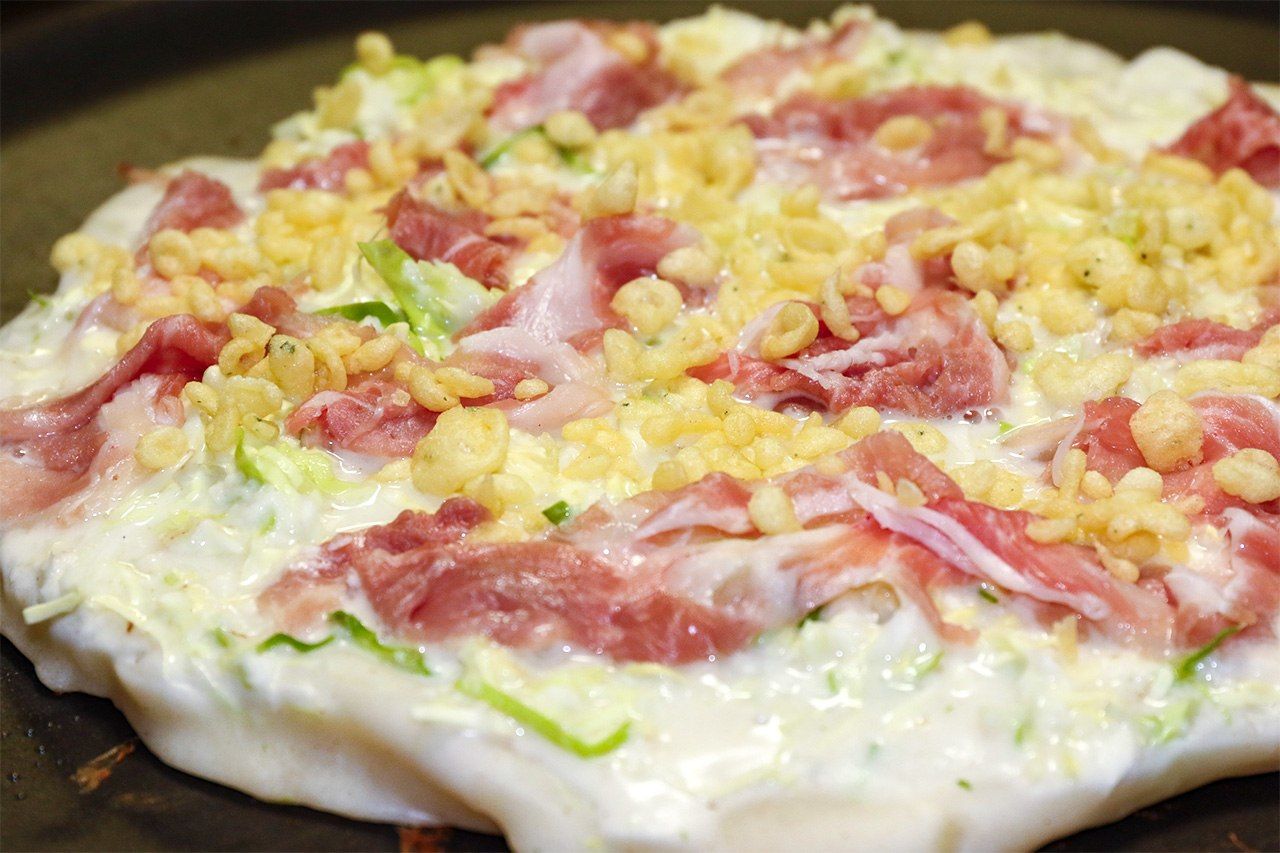
Signature Kansai-style okonomiyaki with the ingredients mixed into the batter. (© Pixta)
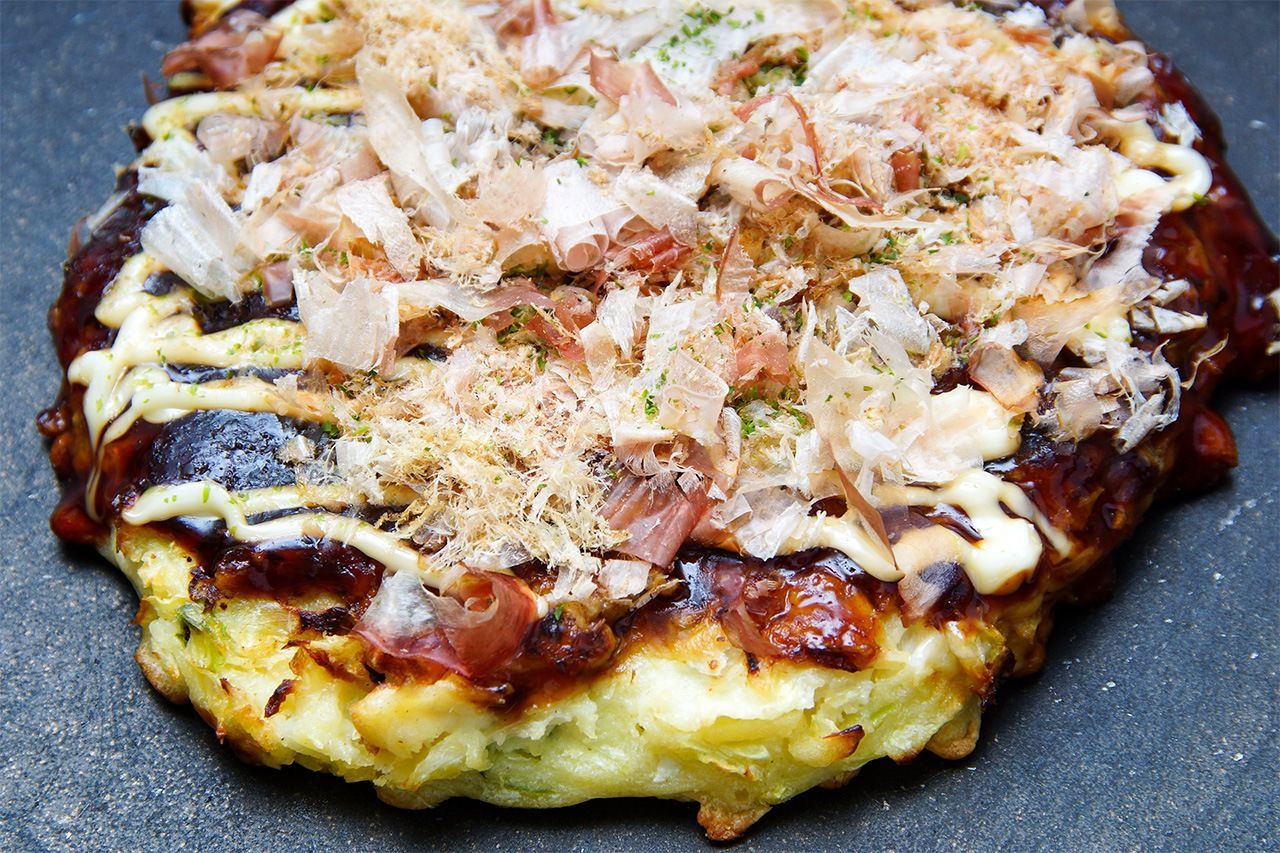
Kansai-style okonomiyaki. (© Pixta)
Hiroshima-Style Okonomiyaki
The most characteristic feature of Hiroshima-style okonomiyaki is that the ingredients are layered instead of being mixed into the batter. A thin layer of batter is baked, on top of which cabbage is heaped up, followed by a layer of pork belly slices, then a variety of other toppings, including shrimp. The whole pile is then flipped over. The pancake layer, now on top, acts like a lid, steam-baking the ingredients underneath. After this, further layers of stir-fried noodles and eggs are added.
It is said the Hiroshima-style okonomiyaki was the result of efforts to deal with food shortages after World War II and the devastation of the atomic bombing. Flour was a valuable commodity, so it was watered down and baked in thin layers with vegetables sandwiched in between. As postwar reconstruction progressed, a richer variety of ingredients became available and the Hiroshima-style okonomiyaki developed into its current form. The central role of cabbage, however, appears to be a vestige of those early days.
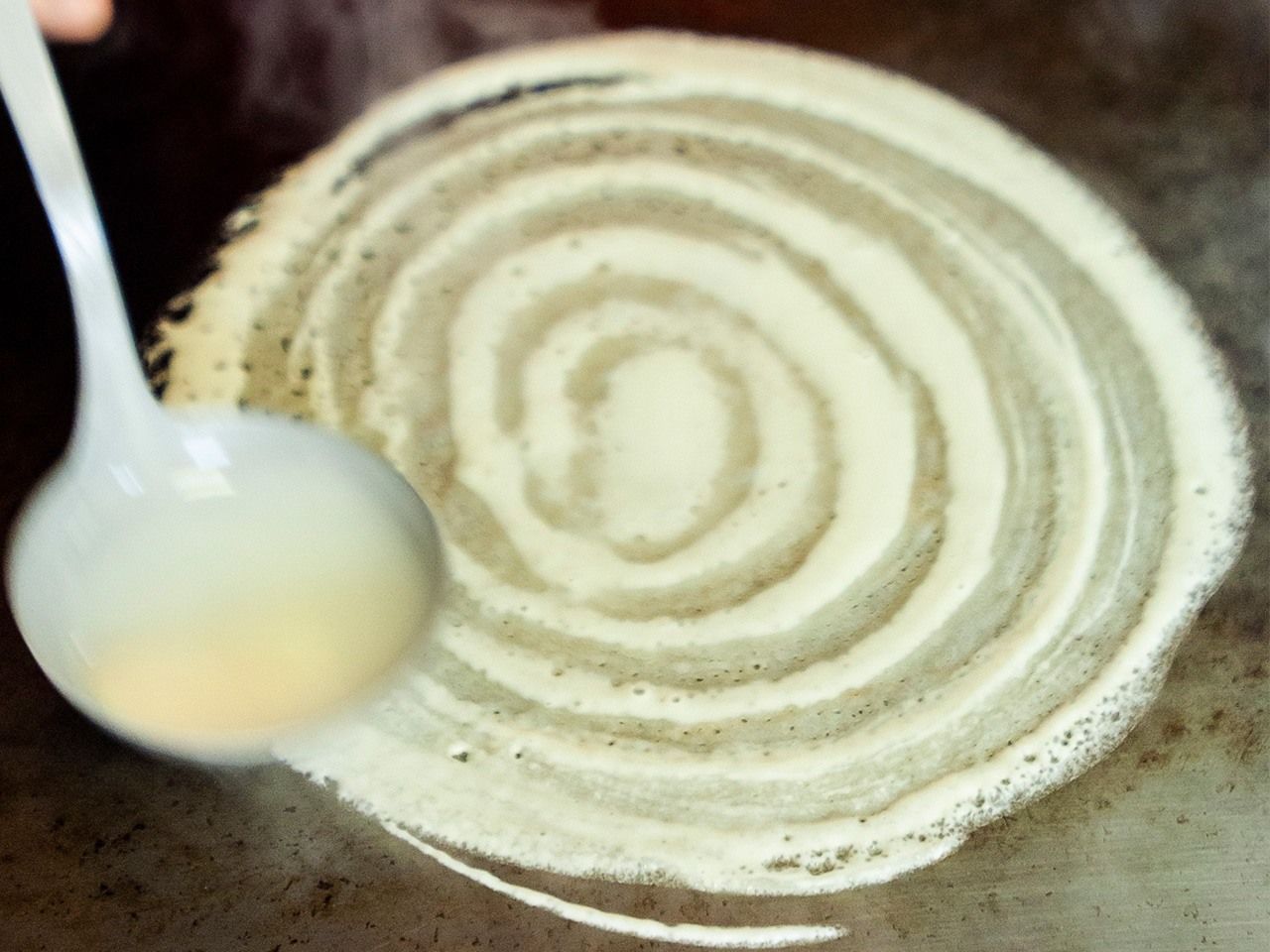
Hiroshima-style okonomiyaki starts with a fine layer of batter. (© Pixta)
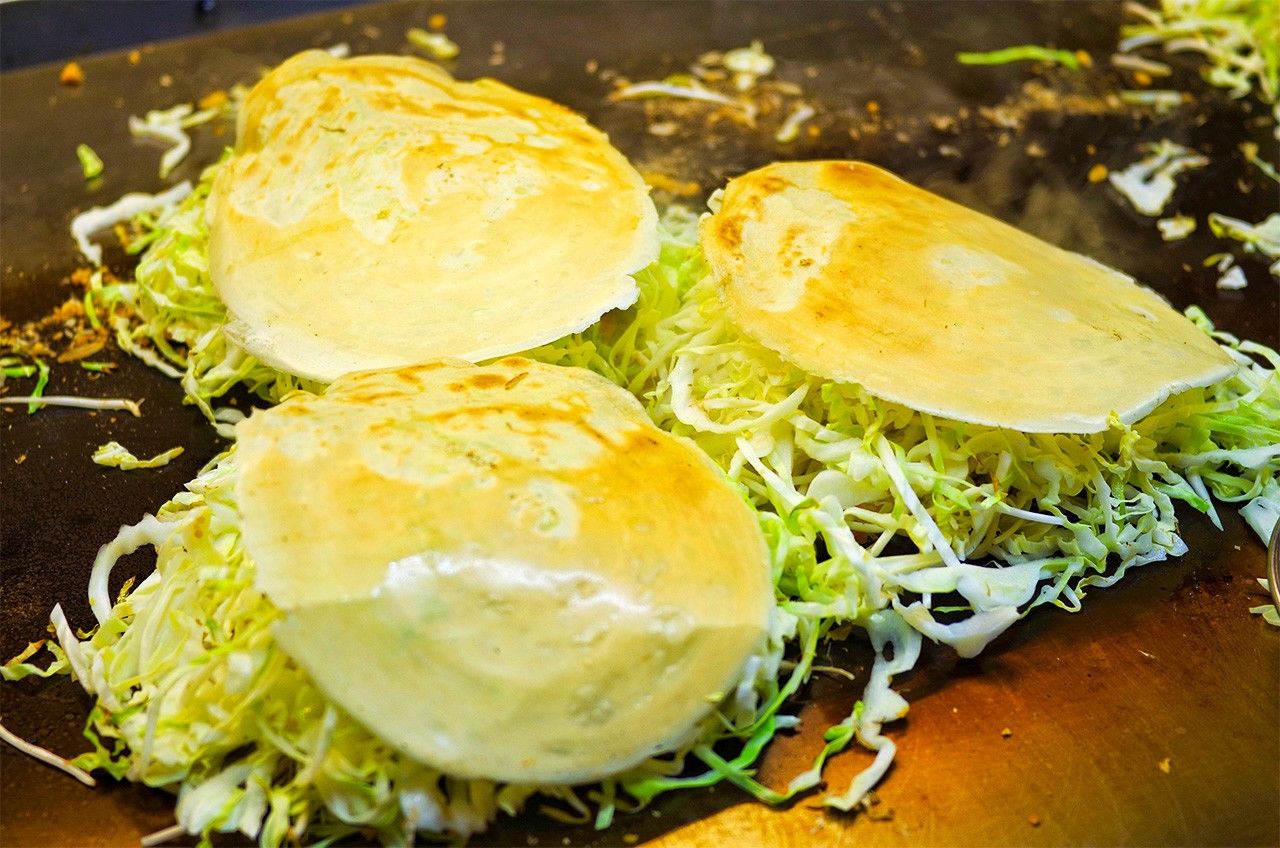
The cooked batter forms a lid over the cabbage and other ingredients to steam-bake them. (© Pixta)
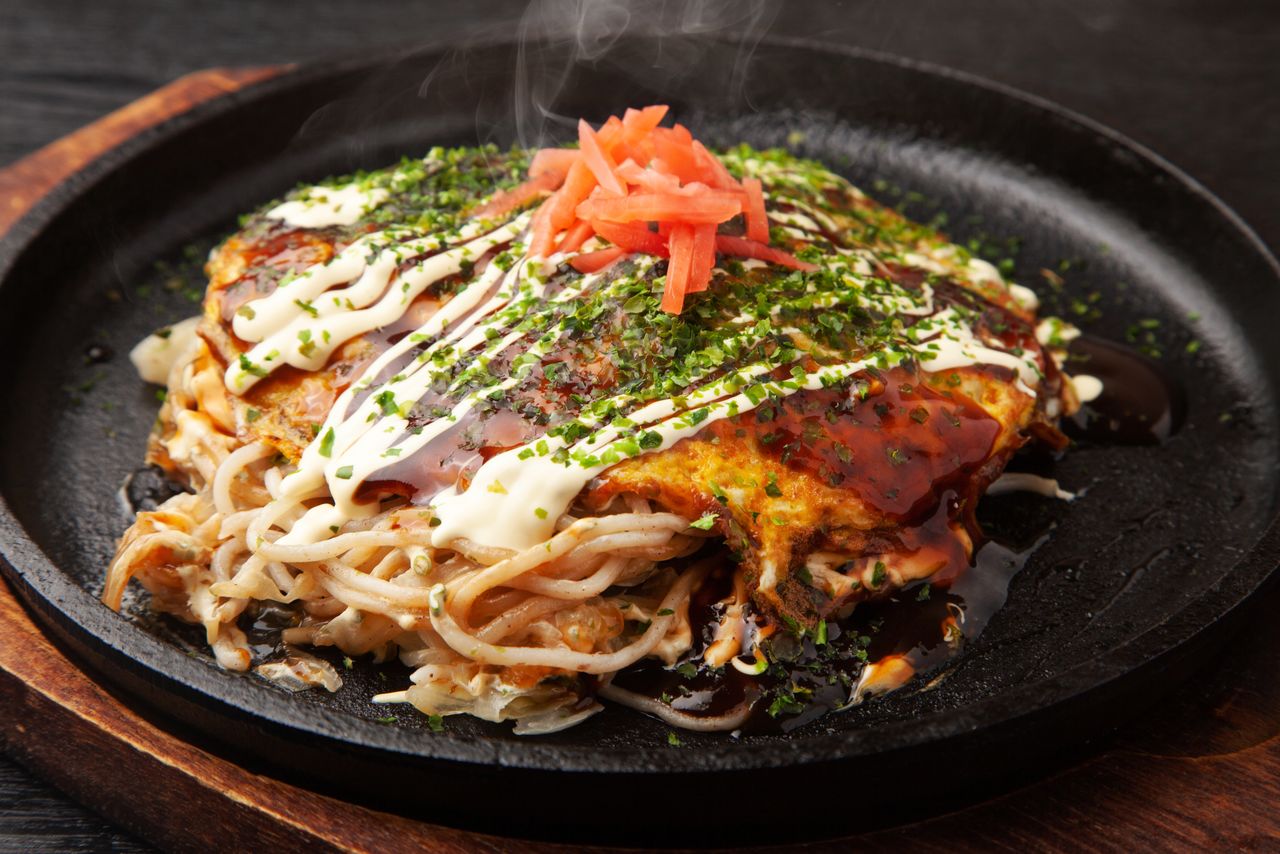
Hiroshima-style okonomiyaki typically includes noodles. (© Pixta)
According to the Hiroshima-based Oconomiyaki Academy, a foundation made up of okonomiyaki restaurants and sauce manufacturers, there are more than 16,000 restaurants in Japan. The ingredients, sauces, and cooking methods vary greatly depending on the region as well as the restaurant. Why not take the opportunity to seek out your own favorite style?
(Translated from Japanese. Banner photo © Pixta.)